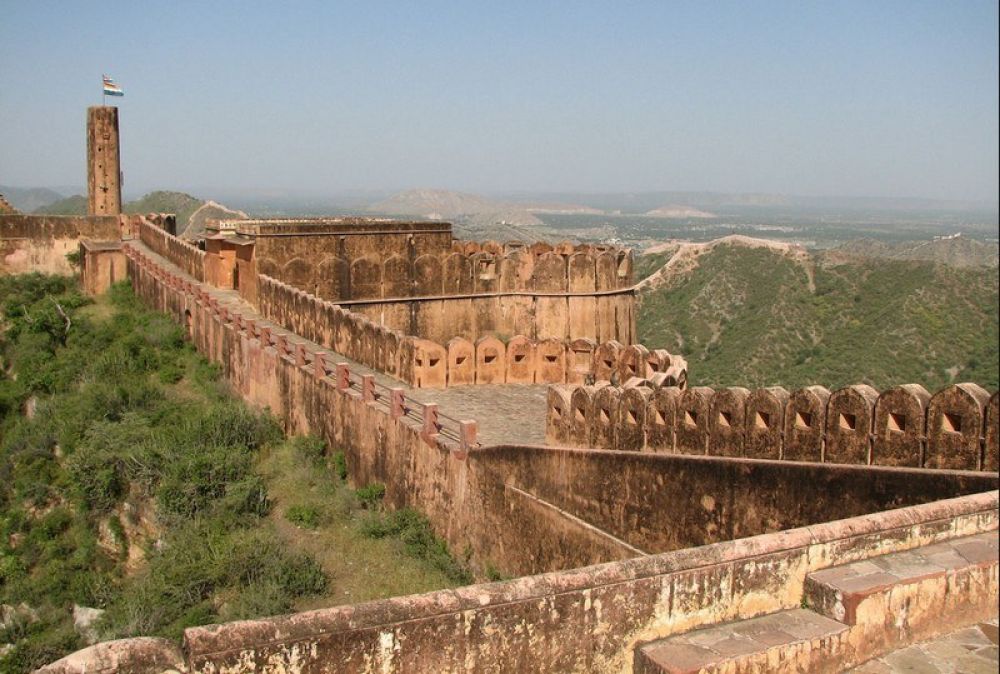

Jaigarh Fort, prominently perched on the Cheel ka Teela (Hill of Eagles) of the Aravalli range overlooking the Amber Fort and Maota Lake, is a spectacular fortification that has stood the test of time in Jaipur, Rajasthan, India. Synonymous with the city's regal past, the fort was built by Maharaja Sawai Jai Singh II in 1726 to protect the Amber Fort and its palace complex.
The fort is noted for its architectural features, with massive gates, a museum, and its world-famous cannon foundry. The Jaivana Cannon, the world's largest cannon on wheels, is a major attraction that draws tourists to this site. Historically, it is said that the cannon was only fired once with a charge of 100 kg and reportedly covered a distance of about 35 km.
Tourism at Jaigarh Fort began to pick up as the Indian tourism industry flourished post-independence. However, it was in the 1970s and 1980s that Jaigarh Fort saw a significant increase in visitors, coinciding with Rajasthan's rise as a premier tourist destination for both Indian and foreign tourists.
Tourism initiatives in Jaipur saw the inclusion of Jaigarh Fort in various itineraries, promoting the fort not only as a historical site but also as a vantage point offering panoramic views of the surrounding landscape. These initiatives focused on highlighting the grandeur and military might of Rajput rulers, reflected in the fort's robust construction and its artillery.
Over the years, the government and local bodies have invested in preserving and enhancing the fort's structure to boost tourism. Efforts have been made to maintain its originality while ensuring tourist safety and accessibility. The fort not only speaks volumes about the military strategies of Rajput rulers but also showcases brilliant water harvesting systems, which appeal to tourists interested in ancient engineering techniques.
Recently, tourism at Jaigarh Fort has been characterized by a growing interest in adventure, heritage, and cultural experiences. Tourists are often found engaging in activities like fort walks, photography tours, and even bike expeditions that include the fort in their route. Additionally, the fort has become a favored spot for filmmakers, further popularizing it as a must-visit destination.
Reflecting the latest trend in digital exposure and marketing, the Rajasthan government and tourism industry stakeholders have been promoting Jaigarh Fort across various social media platforms, driving increased interest and footfall to the fort. Also, virtual tours have become part of the new normal post-COVID-19 leading to a wider recognition of the site’s historical significance.
The government has also introduced tourist-friendly facilities like audio guides available in multiple languages to cater to the global audience and make the history of the fort more accessible.
With its deep historical roots, striking architecture, and panoramic views, Jaigarh Fort is not merely a relic of the past but a testament to the vibrant history and culture of Jaipur. It continues to captivate the hearts of travel aficionados and history buffs alike.